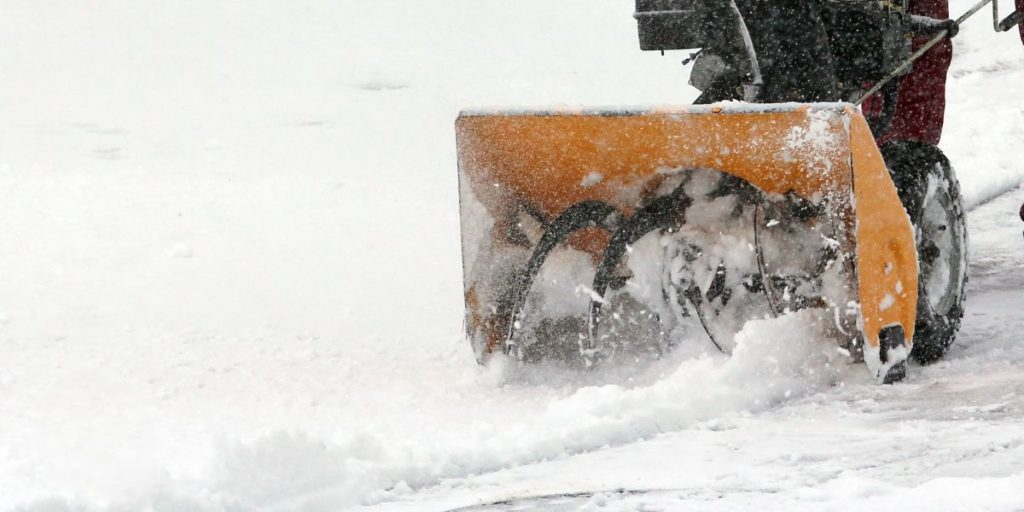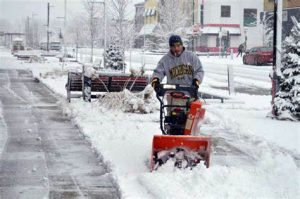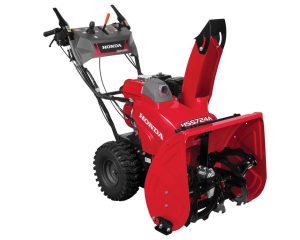The 7 Most Common Causes of Cub Cadet Snowblower Failure
If your snowblower keeps dying on you, it won’t be much help. There are a variety of reasons why you might not want to remove the snow from your driveway. Don’t spend any more time than necessary shivering in the snow—let me help you figure out why your snowblower keeps turning off.
Incorrect choke settings, a clogged fuel line, a dirty carburetor, a faulty spark plug, excess engine oil, a faulty gas cap, and a lack of fresh fuel are all common causes of repeated stalling in a Cub Cadet snowblower.
Carefully handle the snowblower at all times. This entails taking the spark plug out before doing any fixing. Avoid putting any part of your body near the auger or chute. Refer to the Cub Cadet operator’s manual for further safety precautions.

Before diagnosing, repairing, or operating, make sure you’ve read and understood all of the safety instructions in the equipment’s operator’s manual. If you don’t feel confident in your ability to perform the repair safely due to a lack of experience, training, or health, you should get some help from a professional.
Table of Contents
7 Causes of Cub Cadet Snowblower Stall
A Cub Cadet Snowblower Dies From Using Old Gas
If your Cub Cadet snowblower keeps dying, you may want to check the gas. It doesn’t take long for gas to lose its potency as it degrades over time. All fuel purchases should be used within 30 days.
Ethanol, an alternative fuel derived from plants, is now commonly included in gasoline, resulting in a more benign environmental impact. While ethanol is generally safe to use in vehicles, it should be avoided in the Cub Cadet’s small engine.
Water is drawn into the fuel system by ethanol. The fuel system will develop varnish and gummy deposits from the presence of moisture and ethanol.
A sluggish or stalled engine could be the result of fuel restrictions caused by these deposits.
Use only gasoline with an octane rating of 87 or higher and no more than 10% ethanol to reduce the potential damage to your snow thrower caused by ethanol.
Fuel with a low ethanol content or none at all is ideal. Learn more about Cub Cadet snowblower fuel right here.
Fuel for Cub Cadet Two-Cycle And Four-Cycle Snowblower Engines:
- Two-cycle motors take a gas and oil mixture and have one single filling port. The original fuel cap, or the owner’s manual, should have the recommended proportions of gas and oil for your engine.
Two-cycle Cub Cadet snowblower motors call for a 50:1 gas-to-oil mixture. When combining fuel and 2-cycle oil, use a high-quality oil that has been certified as ISO-L-EGD and JASO M345 FD.
- Both the gas and oil tanks for a 4-cycle engine are accessed through separate ports. To fuel, simply pour regular gasoline into the tank.
If your Cub Cadet is stalling and you discover the fuel is old, the first step in troubleshooting should be to drain the old fuel with a fuel siphon pump.
Fresh fuel and a fuel additive like Sea Foam Motor Treatment or STA-BIL will help eliminate moisture, disinfect the fuel system, and stabilize the fuel, so be sure to add some of each to the tank. You can find out more about why I put fuel additives in my snow blower by reading the linked article.
A Cub Cadet Snowblower Dies From a Mistaken Choke Setting.
It takes more gas and less air to get a cold engine going. With the choke engaged, airflow is reduced, increasing the fuel concentration.
It is necessary to turn the choke off once the engine has warmed up to ensure it receives enough air to continue operating.
A Cub Cadet Snowblower Dies Due to a Clogged Fuel Line.
Old fuel can leave behind gummy deposits in the fuel line of your Cub Cadet snowblower, making it difficult for your engine to start. If this occurs, the engine will sputter and eventually die from a lack of fuel.
A fuel shut-off valve can be used to halt fuel flow while one end of the fuel line is disconnected and stored in a container. Restart the fuel supply and verify that fuel is flowing freely from the container.
Turn off the fuel and reconnect the line if so. Remove the disconnected fuel line from your snow blower if you are not. Carburetor cleaner can be sprayed into the line to help break up the obstruction.
The next step is to try clearing the line by forcing compressed air through it. As many times as needed until the limitation is lifted.
If the fuel line is too dry and cracked to remove the clog, you should get a new fuel line of the same length and diameter. Put in place the replacement fuel line or the cleaned original.
A Dirty Carburetor Stops a Cub Cadet Snow Blower From Working.
If your snowblower won’t start and keeps stopping, a dirty carburetor could be to blame. The carburetor is made to control how much gas is mixed with air to make combustion happen.
When the carburetor gums up and blocks the fuel jet or sticks parts together, it can’t mix the right amount of gas and air. If there isn’t enough fuel, the engine can stop.
You will need to check your carburetor and clean it if it needs it. This might sound hard, but it’s really not. If you don’t want to clean it yourself, a mechanic who works on small engines can do it for you.
How to Clean a Dirty Cub Cadet Snowblower Carburetor in 12 Easy Steps
- To prevent carbon buildup, use a carb cleaner spray. You should use carb cleaner in the air filter. To find out if the car even runs, you need to turn on the ignition. If the snow thrower starts, but then dies again, we’ll have to inspect the carburetor.
- In order to disassemble the carburetor without damaging any of its components, you should stock up on pliers, screwdrivers, sockets, and ratchets.
- It would be helpful to snap a photo for reference when putting the pieces back together. Most people today carry a camera in their pocket at all times. Taking a picture of the carburetor is highly recommended in case you forget how to put it back together after dismantling it. You should take a picture of the carburetor’s linkage and springs once they’ve been reinstalled.
- If your snow thrower has a throttle and choke, take them apart.
- It’s best to take the springs out gradually so as not to overstretch them. Taking the springs off the carburetor might require a little bit of twisting. Be careful not to rip the gasket as well. The engine block and the carburetor are separated by this gasket.
- Take out the screw at the base of the float bowl. Carburetor fuel is kept in the float bowl. Gas should be present; therefore, a rag should be prepared to absorb any released gas.
- Carefully disconnect the bowl from its o-ring. Caution: The o-ring should not come into contact with any chemicals. After some use, it will stretch out and become unusable.
- Examine the stem for any blocked holes. The holey stem dangles from the carburetor’s hub. If old fuel clogs these holes, the jet will run out of fuel. Use a thick wire to unclog the holds if necessary. Using a flashlight will allow you to see more clearly. Carburetor cleaner can be used to flush the holes after you’ve finished cleaning them.
- Look for crusty white buildup in the carburetor. The ethanol in your gas has caused this white residue. You should exert as much effort as possible to extract as much white power content as possible. Getting it all out is next to impossible.
- Now that the carburetor is clean, you can reassemble it. Reassemble it in the same order from which you dismantled it. When reassembling the carburetor, it is important to remember to check the photo you took to ensure that all parts are placed back in their proper slots.
- Before firing up your snow thrower, make sure you’ve added fresh fuel that has fuel stabilizer. Give the fuel a chance to fill the carburetor bowl before you turn on the engine. Begin your vehicle’s engine. A quick yank on the rope can get things going if you’re using a pull cord. Even if it doesn’t turn over on the first pull, give it a few and you should have a running machine.
A defective spark plug is to blame for the stalled operation of this Cub Cadet snowblower.
If your snow thrower keeps cutting out, the problem may not be a faulty spark plug but rather an incorrect electrode gap or a loose spark plug wire.
A snowblower can suddenly stop working due to spark problems caused by a fouled spark plug. Take out the spark plug and examine it to see if it has oil or carbon buildup on it. Make use of a wire brush to clean a dirty spark plug.
A new spark plug should be installed if the old one is damaged or has a very dark color. Make sure the plug is properly gapped before installing it.
Cub Cadet Snowblowers Cannot Run on Overly-Oiled Engines
When operating a 4-cycle snow thrower with an excessive amount of oil in the crankcase, oil can travel to the spark plug, causing it to become fouled. Because of this, the snowblower’s spark won’t be able to light.
That’s not all: it can also lead to an engine hydro lock. For more information on the topic, check out “Too Much Oil in Your Snowblower Can Cause Engine Damage.”
Reduce the amount of oil in your 4-stage engine to get it to the proper level. If you notice that your spark plug is dirty or oily, you should change it.
A Broken Gas Cap Stops A Snowblower From Running.
Cub Cadet snowblowers feature gas caps with vents that allow air to circulate. If the fuel tank’s vent is blocked, a vacuum will develop inside. It prevents gasoline from escaping the tank, rendering your snow thrower inoperable.
Taking off the gas cap and turning on the snow thrower will reveal a faulty cap. If the snow thrower fires right up, leave the gas cap off and let it run for a while to make sure it’s running smoothly.
You’re currently waiting to see if the problem persists. It’s important to keep an ear out for the engine to begin running poorly and eventually shut down from lack of fuel.
The gas cap is likely to be defective if the vehicle refuses to start or run smoothly unless air is allowed to enter the fuel tank by removing the cap. A new cap should be used in place of the old one.
Stalling Issues with the Cub Cadet Snowblower
| Problems | Solutions |
|---|---|
| Old gasoline | Remove the used fuel and replace it with new. To lessen the likelihood of rust and corrosion, a fuel additive is recommended. |
| Incorrect choke setting | To prevent the engine from stalling, you should use the choke when starting from cold and release it when the engine is warm. |
| Clogged fuel line | Stop the fuel from going into the snowblower and take off the fuel line. To get rid of the clog, use carburetor cleaner and compressed air. |
| Dirty carburetor | To clean the carburetor, you have to take it apart. If parts inside the carburetor aren’t working as they should, you should rebuild or replace it. |
| Bad spark plug | Clean a spark plug that is dirty. Change a spark plug that looks very dark, is broken, or has a burned electrode. |
| Too much engine oil | Before driving, make sure the engine oil is at the full level line on the dipstick and drain a small amount. |
| Bad fuel cap | You should get a new gas cap if the old one is blocking airflow out of the tank. |






